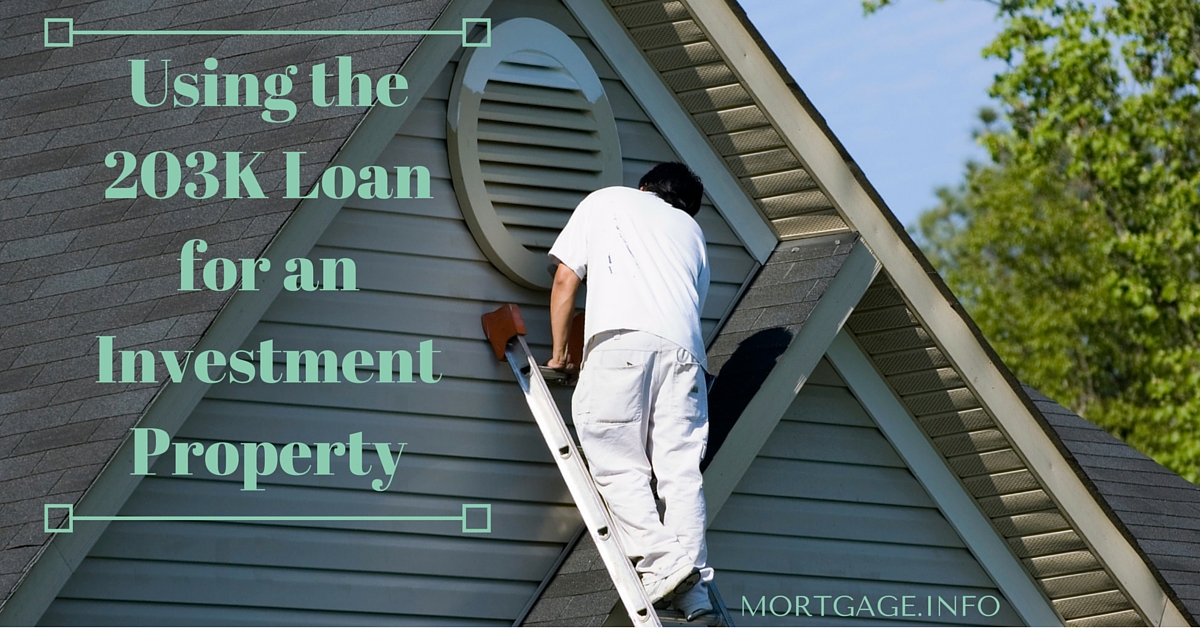 Technically, the 203K loan is only for owner occupied properties. For instance, if you were purchasing a single family home, you would have to live there, not somewhere else and rent the property out. This is a stipulation set forth by the FHA. There is one way to get away with using this form of financing for an investment property, however. This is possible by purchasing a multi-unit property.
Technically, the 203K loan is only for owner occupied properties. For instance, if you were purchasing a single family home, you would have to live there, not somewhere else and rent the property out. This is a stipulation set forth by the FHA. There is one way to get away with using this form of financing for an investment property, however. This is possible by purchasing a multi-unit property.
The 203K Requirements
The 203K loan can be used on a multi-unit up to 4 units. The only caveat is that you, as the borrower, must live in one of the units. This makes it at owner-occupied property. You do have the option to rent out the other 3 units though. This makes it possible to get started in real estate investments without having to qualify for conventional financing. As an added benefit, this type of loan is used on properties that need fixing up, which means you can purchase a property that is in dire need of work for a fraction of what it would have cost if it was in great condition, fix it up how you want, and then rent it out, while also providing yourself with a place to live.
Meeting the Property Code
Chances are the multi-unit property you purchase will not pass an appraisal or meet the appropriate code, but that is acceptable for this loan. The lender and HUD will require you to renovate any areas that do not meet code. This means that the funds that you are eligible to receive as a part of the mortgage must be used for that purpose. Beyond any required renovations, you can use the remaining funds for changes that are cosmetic in nature. Many people use this opportunity to make the units more pleasing to the rental market so that they can get a decent amount of rent for the property. Oftentimes, landlords are able to collect enough rent from the 3 units that the total covers the mortgage payment, enabling them to live without a monthly mortgage obligation coming directly from their paycheck.
Turning the Property Around
Once you are done with the renovations and all HUD money has been distributed to the contractors, the home is yours to do with it as you wish. Of course, you signed the mortgage stating that you would occupy the property, which you must do. But you can also refinance into a conventional loan down the road, assuming that your credit and income allow such a possibility. If this is the case, you may be able to refinance the property as an investment property, allowing you to do the same process all over again on another home. This is the process that many first-time investors go through in order to get started on real estate investments.
The 203K Exceptions
There are a couple of great ways that the FHA 203K loan makes it possible to get financing, helping these investors get started:
- Only 3.5% of the purchase price is needed to put down on the property. These funds can be gifted from someone, which means no money may have to come from your pocket.
- 6% of the purchase price can be used as a seller concession towards closing costs if the seller wishes.
- The remaining contingency funds that are held in the event of an emergency can be used to pay the principal down if the funds are not needed.
- The credit, loan-to-value, and debt-to-income ratios are very flexible with the FHA loan, making it much easier for borrowers to qualify.
The 203K loan, while not an investment loan, can be used as such if you purchase a multi-unit property, allowing you to get started on real estate investing with very little money out of your pocket to start!
